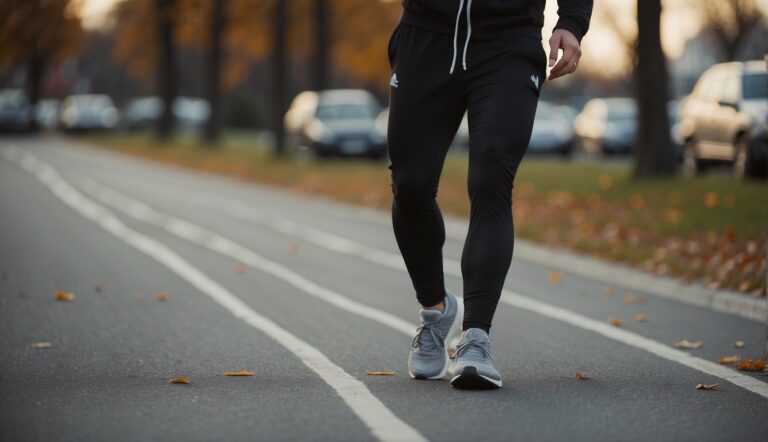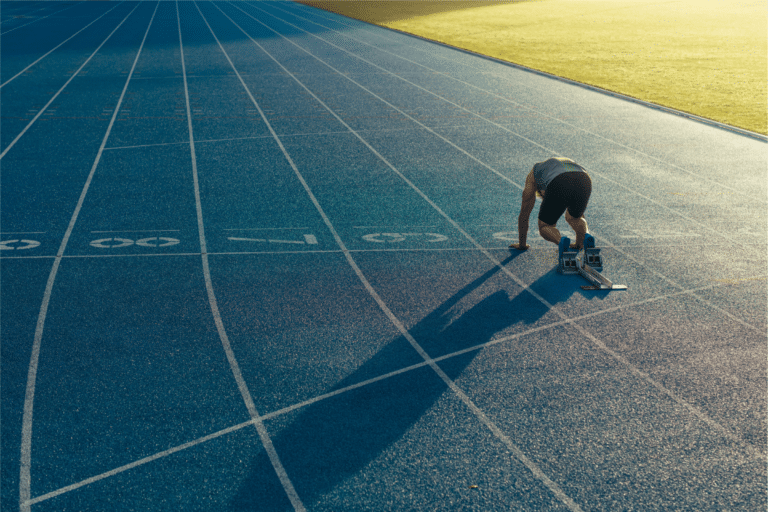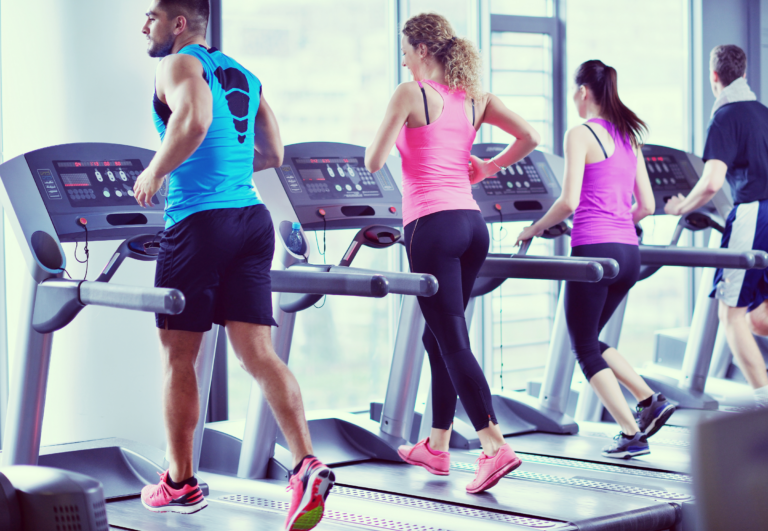How to Warm Up Quads Before Running – Key Routines, Stretches, and Exercises
Warming up your quadriceps, the powerful muscle group at the front of your thigh, is a critical step before running. Engaging in a proper warm-up boosts your performance and significantly reduces the risk of injury.
As a runner, it is important to focus on dynamic stretches and exercises that prepare your quads for the demands of running, ensuring they are activated and ready for the activity ahead.
Dynamic movements increase blood flow to the muscles, enhance flexibility, and improve joint mobility, which is essential for runners who rely on their quads for speed and stability. Start by incorporating leg swings, lunges, and light jogs into your routine to gradually prepare your body.
These exercises help to simulate the running motion, gently stretching and strengthening the quads while also producing heat within the muscles to improve elasticity and function.

Best Way To Warm Up Quads Before Running (15-Minutes)
Warming up your quadriceps – the large muscle group on the front of the thigh – is crucial to enhance mobility and prevent injury. Here’s how you can effectively prepare your quads for a run.
Warming up your quadriceps before running is essential to prepare them for the demands of your workout and to prevent injury. Here is a 15-minute warm-up routine specifically targeting the quads:
1. Foam Rolling (3 minutes)
- Begin by using a foam roller on your quadriceps.
- Roll slowly up and down the front of your thighs, pausing on any tight spots.
- Spend about 1.5 minutes on each leg.
2. Leg Swings (2 minutes)
- Hold onto a stable support for balance.
- Swing one leg forward and back, keeping the motion controlled.
- Perform 20 swings on each leg, focusing on a full range of motion.
3. Walking Lunges (3 minutes)
- Step forward into a lunge, lowering your back knee toward the ground.
- Keep your front knee over your ankle and your torso upright.
- Push through the front heel to rise and step forward into a lunge on the other leg.
- Continue alternating for a series of 12-15 lunges on each leg.
4. Dynamic Squats (3 minutes)
- Stand with feet shoulder-width apart.
- Lower into a squat position, keeping your weight on your heels and your back straight.
- Rise back up to the starting position.
- Perform 2 sets of 15 squats.
5. High Knees (2 minutes)
- Stand in place and begin jogging, lifting your knees high toward your chest.
- Focus on a quick and light contact with the ground.
- Continue the high knees for 2 minutes.
6. Quad Stretch (2 minutes)
- While standing, bend one leg back and hold your ankle, pulling it gently towards your buttocks.
- Keep your knees together and your hips straight to avoid arching your back.
- Hold the stretch for 30 seconds, then switch legs and repeat.
This routine combines foam rolling, dynamic movements, and static stretching to ensure your quadriceps are warmed up, activated, and ready for your run. It’s important to perform these exercises with control and to avoid any jerking motions. If you feel any pain beyond normal muscle stretching, stop the exercise and consult a healthcare professional.
Dynamic Stretching Techniques to Warm Up the Quads
Dynamic stretching primes your muscles for the run ahead by engaging them through active movement. This type of stretching increases blood flow to your quads, enhances mobility in your joints, and prepares your hips and ankles for physical activity.
Leg Swings
Begin by standing parallel to a wall or fence for support, keeping your posture straight. Swing one leg forward and backward, progressively increasing the range of motion. This exercise targets mobility in your hip joints and warms up the quads dynamically. Perform 10-15 swings with each leg.
High Knees
Start with your feet hip-width apart and quickly lift your knees up towards your chest, one at a time, as if running in place. Pump your arms to maintain balance and increase intensity. Perform this dynamic stretch for 30 seconds to activate your quads and elevate heart rate.
Lateral Lunges
From a standing position, step out to the side into a deep lunge, bending one knee while keeping the other leg straight. Push off your bent leg to return to the starting position. Alternate sides for a total of 10 lunges on each side to improve mobility in your hips and ankles while warming up the quads.
Butt Kicks
Jog in place, kicking your heels up towards your buttocks. Focus on quick movements and try to kick yourself with each stride. This exercise helps enhance the flexibility of your quads and knee joints. Continue the butt kicks for 30 seconds.
Remember to listen to your body and adjust the intensity of each dynamic stretch to match your comfort level. These exercises will help elevate your muscle temperature and prepare your quads for the demands of running.
Importance of Warming Up

Warming up your quadriceps, the crucial muscles at the front of your thigh, is key to preparing for a run. It can significantly reduce your risk of injury and enhance your performance by increasing blood flow and improving range of motion.
Injury Risk Reduction
Warming up increases the temperature of your muscles, making them more pliable. This reduces the risk of strains and tears as it prepares the muscles for the activity ahead.
- Muscles: Quads specifically need to be warm to handle the impact of running.
- Blood Flow: Enhanced circulation delivers more oxygen to the muscles.
- Range of Motion: A good warm-up increases flexibility, leading to smoother motion.
Enhanced Performance
By gradually increasing your heart rate through a warm-up, you prime your cardiovascular system for the exertion of running.
- Heart Rate: An elevated heart rate during a warm-up ensures that when you start running, your body isn’t caught off-guard.
- Muscle Soreness: Regularly warming up can reduce post-run muscle soreness by preparing your muscles for the stress of running.
Remember, start slow and progressively build up the intensity of your warm-up to get the most benefit for your quads and overall running performance.
Additional Warm-Up Exercises

Before heading out for a run, incorporating a series of dynamic exercises into your warm-up routine will prepare your muscles and increase blood flow, ensuring your body is ready for the activity ahead.
Light Jog & A-Skips
Light Jog
- Duration: 3-5 minutes
- Purpose: Elevates heart rate and warms up major muscle groups
A-Skips
- Frequency: 1-2 sets of 30 seconds each
- Purpose: Activates the hip flexors and quads, enhances coordination
Calf & Quad Stretches
Calf Stretches
- Position: Lean against a wall, one foot in front of the other
- Duration: Hold each stretch for 30 seconds
Quad Stretches
- Position: Standing, pull one foot towards your glutes
- Duration: Hold for 20-30 seconds per leg
Mountain Climbers & Jumping Jacks
Mountain Climbers
- Steps: In a plank position, alternate bringing knees to chest rapidly
- Sets: 2 sets of 30 seconds
Jumping Jacks
- Steps: Jump to a position with legs spread wide as hands touch overhead
- Sets: 2 sets of 30 seconds
This dynamic warm-up will target key muscle groups and prepare you for a running warm-up, easing the transition into your workout.
Transition into Running

To effectively transition into a run, especially an early morning run, it’s essential to focus on warming up your quads to ensure your legs are prepared for the activity ahead.
Start with Low Intensity
Begin your running warm-up with low-intensity exercises that mimic running motions at a slower pace. This helps activate your quadriceps and gets them ready for the demands of running.
- Walking Lunges: Perform walking lunges across a distance to engage the quads and enhance flexibility.
- Slow Jog: Spend 3-5 minutes jogging at a slow pace to increase blood flow to the muscles.
Gradually Increase Pace
After your muscles feel warmer and more flexible, slowly build up your running speed.
- From Jog to Run: Transition from a slow jog to a steady run over the course of 5 minutes.
- Intervals: Incorporate short bursts of increased pace, alternated with slower running to boost your heart rate and prepare your quads for the endurance and strength required for speed.
Remember to cool down with a post-run stretch to maintain flexibility and prevent stiffness.






